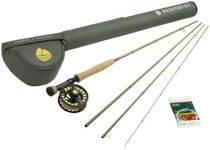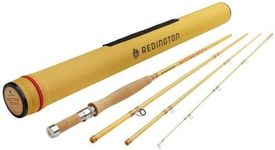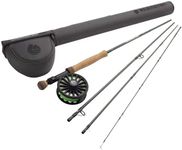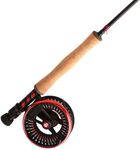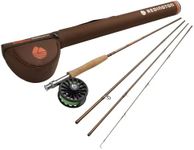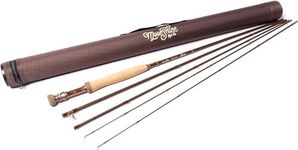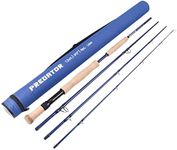Buying Guide for the Best Fly Fishing Rods
Choosing the right fly fishing rod is crucial for a successful and enjoyable fishing experience. The rod you select should match the type of fishing you plan to do, the species you are targeting, and your personal preferences in terms of feel and performance. Understanding the key specifications of fly fishing rods will help you make an informed decision that suits your needs and enhances your fishing adventures.Rod LengthRod length is the measurement from the butt of the rod to the tip. It is important because it affects casting distance and control. Shorter rods, typically under 8 feet, are ideal for small streams and tight spaces where precision is more important than distance. Medium-length rods, around 8 to 9 feet, are versatile and suitable for a variety of conditions, making them a good choice for beginners. Longer rods, over 9 feet, are best for large rivers and open water where long casts are necessary. Choose a rod length based on the type of water you will be fishing and the casting distance you need.
Rod WeightRod weight refers to the size of the fly line the rod is designed to cast, not the physical weight of the rod itself. It is crucial because it determines the type of fish you can target and the conditions you can fish in. Lighter weights, such as 1-3, are suitable for small fish and delicate presentations in calm waters. Medium weights, like 4-6, are versatile for trout and bass in various conditions. Heavier weights, 7-9, are used for larger fish and windy conditions. Choose a rod weight based on the species you are targeting and the typical weather conditions you will encounter.
Rod ActionRod action describes how flexible the rod is and how it bends when casting. It is important because it affects casting style and accuracy. Fast action rods bend mostly at the tip and are great for long casts and windy conditions, providing more power and speed. Medium action rods bend more towards the middle, offering a balance between power and flexibility, suitable for a variety of fishing situations. Slow action rods bend throughout the length of the rod, ideal for short, precise casts and delicate presentations. Choose a rod action based on your casting style and the type of fishing you plan to do.
MaterialThe material of the rod affects its durability, weight, and sensitivity. Common materials include graphite, fiberglass, and bamboo. Graphite rods are lightweight, sensitive, and strong, making them popular for most fishing situations. Fiberglass rods are heavier and more flexible, offering a slower action that is great for beginners and small streams. Bamboo rods are traditional and offer a unique feel, but they require more maintenance and are typically more expensive. Choose a material based on your preference for weight, feel, and maintenance.
PiecesFly rods come in different numbers of pieces, affecting portability and convenience. Two-piece rods are simple and offer fewer connection points, which can enhance sensitivity and performance. Four-piece rods are more portable and easier to travel with, making them a popular choice for anglers who travel frequently. Some rods come in even more pieces for ultra-portability. Choose the number of pieces based on how often you travel with your rod and your preference for ease of transport versus performance.

